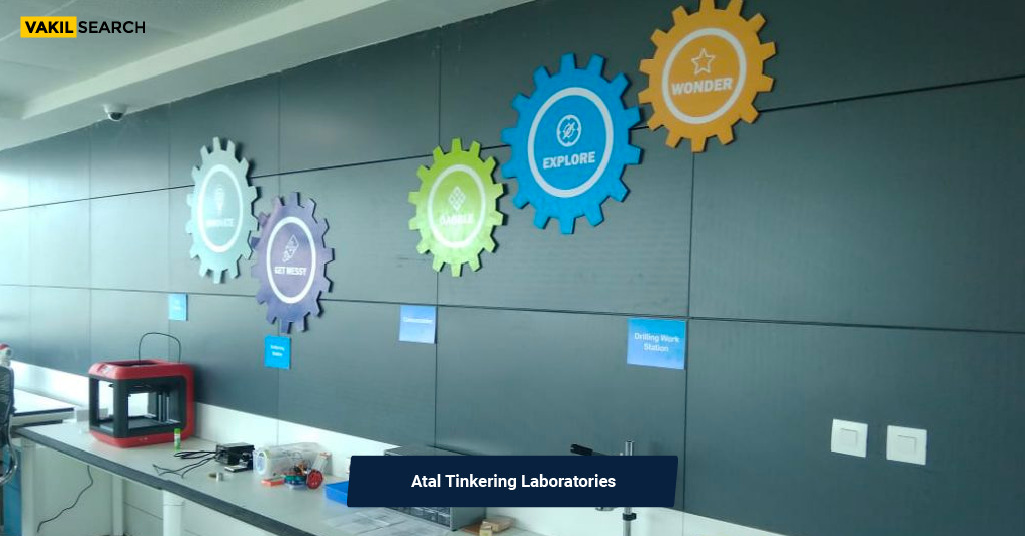Atal Tinkering Labs: Govt. of India's innovation initiative in schools, fostering creativity, STEM education, with 5000+ labs nationwide.
The Atal Tinkering Laboratories (ATL) is a significant initiative by the Government of India under the Atal Innovation Mission (AIM) to promote innovation and entrepreneurship among high school students.
Objectives
Create Workspaces for Innovation
- Establish workspaces suitable for young minds to learn innovation skills.
- Encourage hands-on activities for developing ideas in a flexible environment.
Empower Youth with 21st-century Skills
- Foster creativity, innovation, critical thinking, design thinking, and ethical leadership.
- Cultivate social and cross-cultural collaboration skills.
Address Unique Problems
- Build innovative solutions for India’s unique problems.
- Support the nation’s efforts to grow as a knowledge economy.
Key Features of Atal Tinkering Laboratories
Hands-on Innovation
- ATL provides a workspace for hands-on, do-it-yourself innovation.
STEM Education
- Offers opportunities for students to work with tools and equipment to understand STEM (Science, Technology, Engineering, and Math) concepts.
Stimulate Inventiveness
- Conducts various activities such as competitions, exhibitions, workshops, and lecture series to stimulate inventiveness among students.
Eligibility Criteria
School Management
- Managed by the government, local body, or private trusts/society.
Built-up Space
- Schools must provide at least 1500 square feet of built-up space, with exceptions for specific regions.
Scope of Atal Tinkering Laboratories
Geographic Coverage
- Established in 87% of districts and 110 Aspirational districts.
Number of Lab
- 5000 laboratories established in both government and private schools.
Community Hubs
- Majority in co-educational and girls’ schools serving as community hubs of innovation.
Application Process
Inviting Applications
- Schools submit applications via the online application portal.
- Four sections include contact information, basic school identity, school performance, and ATL-related information.
Screening of Applications
- Eligibility criteria include built-up space, dedicated teachers, basic infrastructure, and regular attendance.
- Screening takes 1-2 months.
Final Evaluation
- Further evaluation based on district coverage, school participation, and other factors.
- List of selected schools communicated through the AIM website and email.
Financial Support
Grant-in-Aid
- AIM provides a grant-in-aid covering one-time establishment costs of Rs. 10 lakh and operational expenses of Rs. 10 lakh for a maximum of five years.
How Does an ATL Lab Work?
Levels of Tinkering
- Four levels involving experience design thinking, ideation, introduction to new technologies, and teamwork.
Learning by Doing
- Students explore new ideas, test them, and follow a ‘learning by doing’ approach.
Innovation Among Young Innovators
- Enables students to develop new perspectives towards social and community problems.
Program Design of Atal Tinkering Laboratories
Exploration and Ideation
- Introduction to different levels of tinkering, including experience design thinking and ideation.
Introduction to Technologies
- Gradual introduction to new technologies, computational thinking, physical computing, and other sectoral areas.
Teamwork
- Students work in teams to elevate their learning from previous phases.
FAQs on Atal Tinkering Laboratories
What is an Atal Tinkering Lab?
An Atal Tinkering Lab (ATL) is a workspace established in schools under the Atal Innovation Mission (AIM), Government of India. It aims to foster innovation and entrepreneurship among high school students by providing hands-on experiences in technology, science, and innovation.
How many ATL labs are there in India?
As of the provided information, ATLs have been established in 87% of districts, resulting in the creation of 5000 laboratories across the country. The goal is to establish over 10,000 ATLs by 2020.
Who launched the Atal Tinkering lab for schools?
The Atal Tinkering Lab initiative was launched by the Government of India under the Atal Innovation Mission (AIM).
Who can apply for ATL Labs?
Schools managed by the government, local bodies, or private trusts/societies are eligible to apply for Atal Tinkering Labs. The eligibility criteria also include providing a specified amount of built-up space.
What are the parameters used for evaluation for ATL Grant?
The evaluation for the ATL Grant involves several parameters, including:
Built-up space: Schools must provide a specified area.
Dedicated teachers: Presence of mathematics and science teachers.
Basic infrastructure: Availability of computers, internet connectivity, steady electricity, science lab, library, and playground.
District coverage: Consideration of the geographical reach of the school.
School participation: In science, technology, arts, and creative festivals and awards.
Other ATL-related information: Existence of basic infrastructure, regular attendance, etc.
Also, Read:










